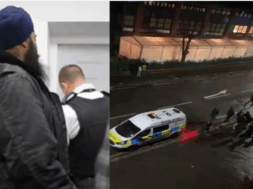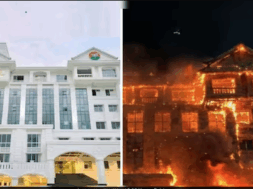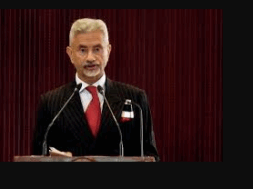
Roving Periscope: Dhaka apes Islamabad; making Hasina Imran-II
Virendra Pandit
New Delhi: That Bangladesh is racing to morph back into what it was until 1971—East Pakistan—was little in doubt when the then Prime Minister Sheikh Hasina Wajed’s democratically-elected government was toppled in August 2024, 16 months after her counterpart in Islamabad, Imran Ahmed Khan Niazi, was overthrown—both allegedly as America’s behest.
Now, Dhaka is preparing to make Hasina Imran Khan II. If Imran Khan is facing around 150 court cases, over 200 cases of all colors, shapes, and sizes have been slapped against Hasina.
A kangaroo court’s order on Thursday is the beginning of Hasina’s long trial.
According to media reports on Thursday, a Bangladeshi court has ordered the arrest of self-exiled former Prime Minister Sheikh Hasina, who fled to India in August after being toppled in an Islamic fundamentalist outfit Jamaat-e-Islami-led “students uprising.”
The charges against her are hackneyed: “Crimes against humanity!”
The toppled leader seems to be in India, which has a bilateral extradition treaty with Bangladesh – although a loophole could prevent her return.
Mohammad Tajul Islam, chief prosecutor of Bangladesh’s International Crimes Tribunal (ICT), said on Thursday the court had issued arrest warrants for Hasina and 45 others, ordering that they attend court by November 18, according to The Daily Star local newspaper.
Ironically, it was Hasina’s government that created the deeply contentious ICT in 2010 to probe atrocities during the 1971 independence war from Pakistan.
The United Nations and rights groups criticized its procedural shortcomings, with the court often seen as a means for Hasina to eliminate political opponents.
Several cases accusing Hasina of orchestrating the “mass murder” of protesters are now being investigated by the court.
“Sheikh Hasina was at the helm of those who committed massacres, killings, and crimes against humanity in July to August,” Islam said, referring to a crackdown on the (so-called) students’ protests, which killed more than 600 people before she fled to India, according to the interim Health Ministry.
The anti-Hasina protests began with demonstrations demanding the government abolish its practice of reserving a third of civil service jobs for relatives of the 1971 war veterans, before spiraling into wider protests calling for her resignation.
Pro-West human rights groups accused Hasina of using excessive force against protesters, a charge she denied.
After weeks of nationwide unrest, Hasina resigned and fled to India in early August. She was replaced by the America-sponsored Nobel Peace Prize-winning economist Muhammad Yunus, who is currently leading the country’s interim government as its Chief Advisor–until fresh parliamentary elections which are nowhere in sight.
Hasina has not been seen in public since leaving Bangladesh. The 77-year-old’s last official whereabouts is a military airbase near India’s capital, New Delhi.
The media reported that her presence in India has infuriated Bangladesh, which has revoked Hasina’s diplomatic passport. The two countries have a bilateral extradition treaty which could theoretically compel her to return to face criminal trial.
However, a clause in the treaty says extradition might be refused if the offense is of a “political character”.
It is not clear whether the former pro-democracy icon, whose pro-West critics say had become increasingly ‘autocratic’ during her 15-year reign, will remain in India or head elsewhere.














